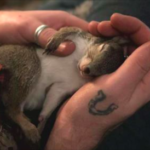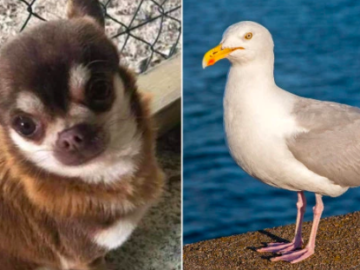Squirrel expert John Koprowski was visiting India in 2006 when he came across an amazing sight — the Malabar giant squirrel, a species so big that it can grow up to 36 inches long. In fact, Koprowski thought it looked more like a primate at first.
“These are giants!” Koprowski, professor and associate director at the School of Natural Resources and the Environment at the University of Arizona, told The Dodo.

But these beauties aren’t just known for their size. Their fur coats, which range in color from black, orange, and brown to purple and maroon, make them stunning. And these bright colors and patterns are more than beautiful. They help the critters survive.
“In the shaded understory of a dense forest, the patchy colors and dark hues are a great adaptation to avoiding detection,” Koprowski said. “But when you see these in the sunlight, they show their ‘true colors’ and beautiful pelage [fur].”

Malabar giant squirrels are also a rare sight. They live high up in the forest canopy of eastern and southern India.
“They are pretty shy,” Pizza Ka Yee Chow, squirrel expert and research fellow at Hokkaido University, told The Dodo. “One of my friends who lives in India shared with me that the best way to see these giant squirrels is to climb up on a tree, stay very quiet and wait for them to emerge from their [nest].”
According to Wikipedia, their “diet includes fruit, flowers, nuts and tree bark. Some subspecies are omnivorous, also eating insects and bird eggs.”

The International Union for Conservation of Nature (IUCN) currently has this species on the designated list of “least concern,” meaning they aren’t currently in danger of extinction. However, they do need protection.
“The real threat is the slow loss and degradation of forested habitats as humans move in and as climate change impacts higher elevation areas,” Koprowski said. “The good news is that they have a wide distribution and seem to tolerate human presence and even some modest level of low-density housing.”

“They’re part of a group of squirrels that is pretty ancient,” Koprowski added. “They’re a unique evolutionary group that’s been here a long time, which is a good thing.”






